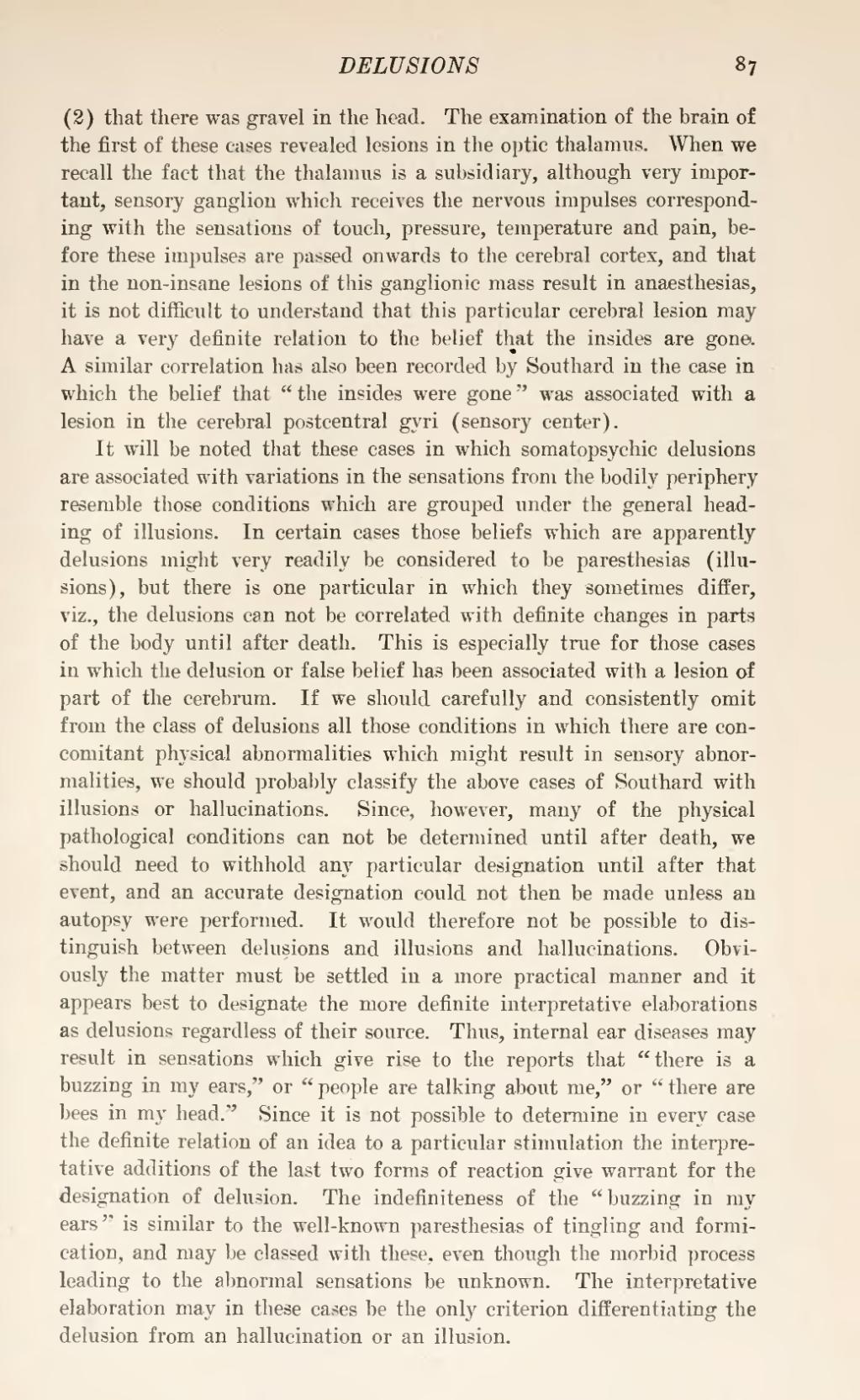(2) that there was gravel in the head. The examination of the brain of the first of these cases revealed lesions in the optic thalamus. When we recall the fact that the thalamus is a subsidiary, although very important, sensory ganglion which receives the nervous impulses corresponding with the sensations of touch, pressure, temperature and pain, before these impulses are passed onwards to the cerebral cortex, and that in the non-insane lesions of this ganglionic mass result in anæsthesias, it is not difficult to understand that this particular cerebral lesion may have a very definite relation to the belief that the insides are gone. A similar correlation has also been recorded by Southard in the case in which the belief that “the insides were gone” was associated with a lesion in the cerebral postcentral gyri (sensory center).
It will be noted that these cases in which somatopsychic delusions are associated with variations in the sensations from the bodily periphery resemble those conditions which are grouped under the general heading of illusions. In certain cases those beliefs which are apparently delusions might very readily be considered to be paresthesias (illusions), but there is one particular in which they sometimes differ, viz., the delusions can not be correlated with definite changes in parts of the body until after death. This is especially true for those cases in which the delusion or false belief has been associated with a lesion of part of the cerebrum. If we should carefully and consistently omit from the class of delusions all those conditions in which there are concomitant physical abnormalities which might result in sensory abnormalities, we should probably classify the above cases of Southard with illusions or hallucinations. Since, however, many of the physical pathological conditions can not be determined until after death, we should need to withhold any particular designation until after that event, and an accurate designation could not then be made unless an autopsy were performed. It would therefore not be possible to distinguish between delusions and illusions and hallucinations. Obviously the matter must be settled in a more practical manner and it appears best to designate the more definite interpretative elaborations as delusions regardless of their source. Thus, internal ear diseases may result in sensations which give rise to the reports that “there is a buzzing in my ears,” or “people are talking about me,” or “there are bees in my head.” Since it is not possible to determine in every case the definite relation of an idea to a particular stimulation the interpretative additions of the last two forms of reaction give warrant for the designation of delusion. The indefiniteness of the “buzzing in my ears” is similar to the well-known paresthesias of tingling and formication, and may be classed with these, even though the morbid process leading to the abnormal sensations be unknown. The interpretative elaboration may in these cases be the only criterion differentiating the delusion from an hallucination or an illusion.
